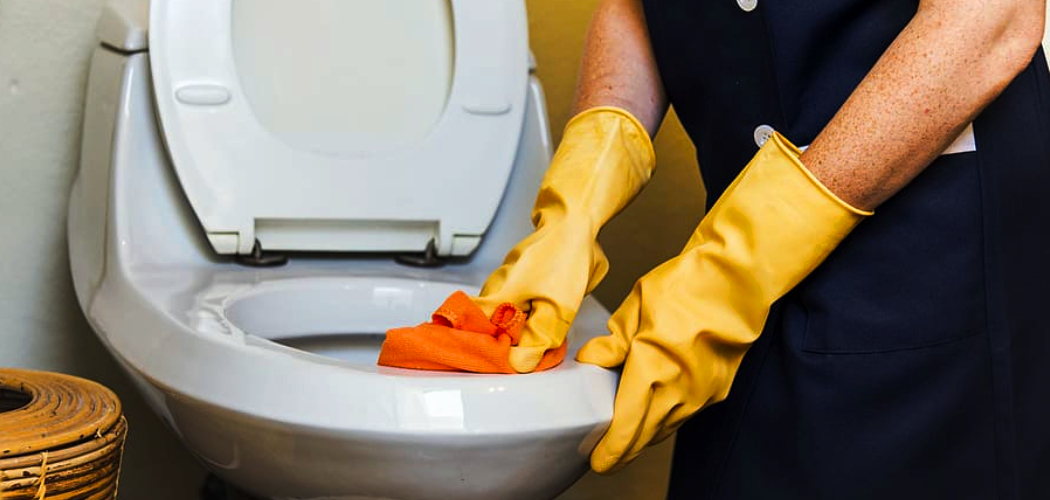Unpleasant toilet odors can be both embarrassing and uncomfortable, affecting the atmosphere and overall cleanliness of your home or workspace. Fortunately, with the right approach, eliminating these odors is a manageable task.
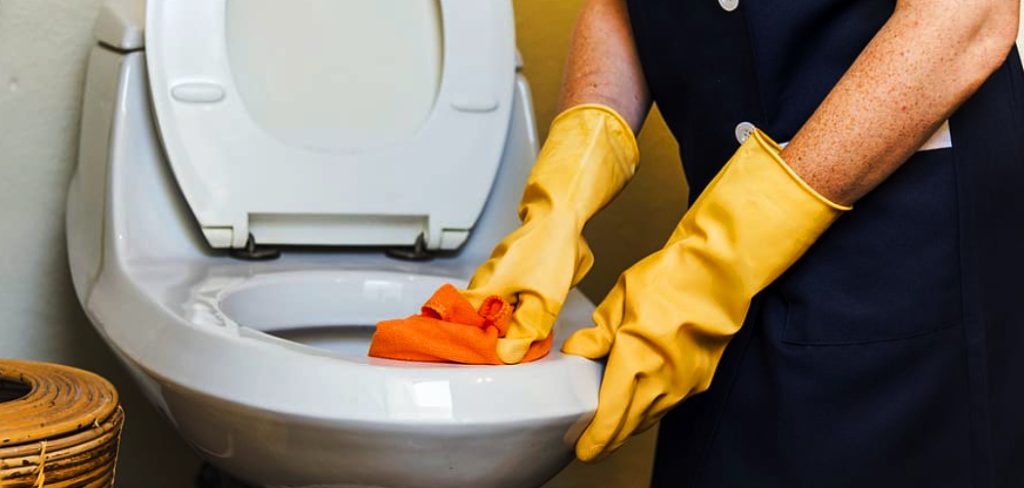
This guide on how to remove toilet odor will walk you through simple, effective methods to identify the source of the odor and implement practical solutions to keep your toilet smelling fresh and inviting. Whether caused by poor ventilation, lingering bacteria, or plumbing issues, addressing toilet odors doesn’t have to be a daunting task.
Why Does My Toilet Smell?
Before we dive into solutions, it’s essential to understand what causes toilet odors. The most common culprits are bacteria and trapped air in the plumbing system. Bacteria thrive in warm, moist environments, making your toilet bowl an ideal breeding ground. When flushed, these bacteria release foul-smelling gaseous compounds, causing unpleasant odors.
Poor ventilation is another common cause of toilet odor. Without proper air circulation, the oxygen levels in your bathroom decrease, creating a musty smell. Additionally, a clogged or malfunctioning plumbing system can lead to sewer gas buildup, resulting in strong, sulfur-like smells.
Needed Materials
- Rubber Gloves
- Cleaning Brush or Scrubber
- All-purpose Cleaner
- Toilet Bowl Cleaner
- Baking Soda
- White Vinegar
- Essential Oils (Optional)
8 Step-by-step Guides on How to Remove Toilet Odor
Step 1: Identify the Source of the Odor
The first step in removing toilet odor is to pinpoint its source. Start by checking the toilet bowl for any visible buildup of grime, stains, or bacteria, as these can emit unpleasant smells. Next, inspect areas like the base of the toilet, the toilet tank, and the surrounding floor to rule out any leaks or hidden areas of dirt. If the unpleasant odor persists, examine your bathroom’s ventilation system and plumbing.
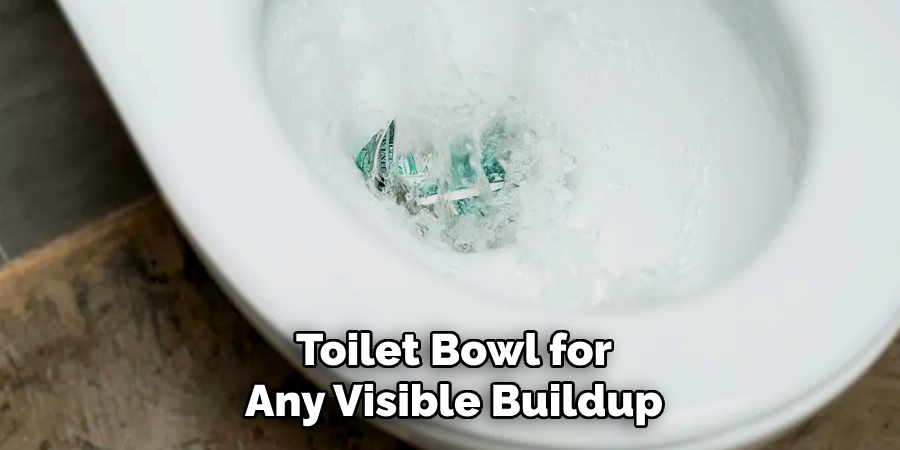
Poor airflow or sewer gas leaks from the plumbing system could be contributing factors to the smell. By thoroughly assessing these areas, you’ll have a clear starting point for addressing and eliminating the odor effectively.
Step 2: Put on Protective Gear
Before you begin cleaning, it’s essential to prioritize your safety by putting on protective gear. Start by wearing a pair of durable rubber gloves to protect your hands from bacteria, cleaning chemicals, and any grime you may encounter.
If you’re using strong cleaning agents or if the odor is particularly strong, consider wearing a mask to prevent inhaling fumes. This step ensures both hygiene and safety as you proceed with the cleaning process.
Step 3: Thoroughly Clean the Toilet Bowl
Using an all-purpose cleaner, scrub the toilet bowl thoroughly, including under the rim and around the edges. Pay particular attention to any visible stains or buildup that could be contributing to the odor. If necessary, use a specialized toilet bowl cleaner for tougher stains.
Once you’ve scrubbed the entire bowl, flush multiple times to remove any remaining residue or cleaning solution.

Step 4: Deep Clean the Toilet Tank
The toilet tank is often overlooked during regular cleaning, yet it can be a major source of odors. Begin by turning off the water supply to the toilet and flushing it to empty the tank. Once the tank is drained, inspect it for any mold, mildew, or mineral deposits that may have accumulated over time.
Using a cleaning brush or scrubber, scrub the inside walls of the tank with a mixture of baking soda and white vinegar. This combination effectively removes buildup while neutralizing odors. Rinse the tank by filling it with clean water and then flushing it to ensure all residue is removed. For an added touch of freshness, you can add a few drops of essential oil to the tank water before turning the water supply back on. Regularly cleaning the tank will help keep your toilet odor-free and functioning efficiently.
Step 5: Check and Clean the Toilet Brush
Toilet brushes can quickly become breeding grounds for bacteria if not cleaned regularly. To prevent any foul smells from lingering after cleaning, rinse your toilet brush thoroughly with hot water and soap.
For an extra level of cleanliness, soak the brush in a mixture of bleach and water for a few minutes before rinsing it off. Make sure to let the brush air dry completely before placing it back in its holder.
Step 6: Sprinkle Baking Soda Around the Base of the Toilet
Baking soda is known for its natural odor-absorbing properties, making it an excellent solution for eliminating toilet odors. After cleaning the toilet bowl and tank, sprinkle a generous amount of baking soda around the base of the toilet. Let it sit for 10-15 minutes before wiping it away with a damp cloth.
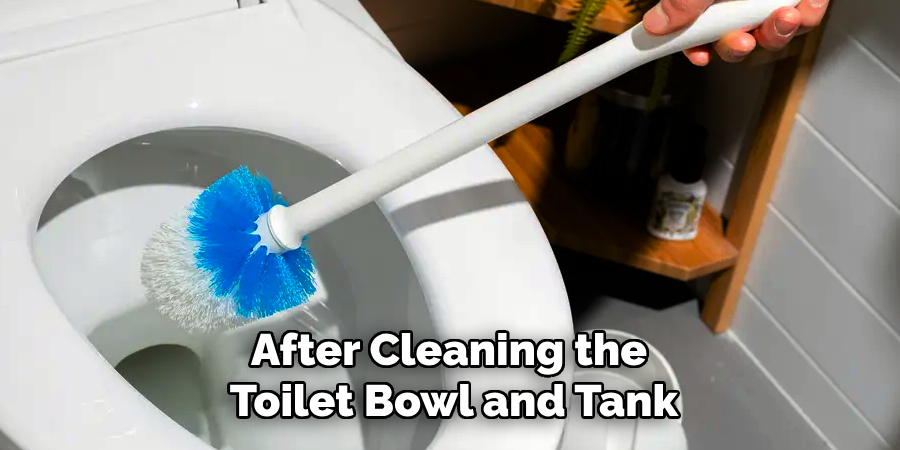
You can also mix baking soda with water to create a paste and use it to scrub any stubborn stains or odors. Let the mixture sit for a few minutes before rinsing it off.
Step 7: Improve Ventilation
As mentioned earlier, poor ventilation can contribute to unpleasant toilet odors. To improve air circulation in your bathroom, keep windows open when possible or invest in an exhaust fan that will effectively remove moisture and ensure proper airflow.
Additionally, regularly cleaning air vents and replacing filters can help eliminate musty smells caused by stagnant air.
Step 8: Call a Professional Plumber
If you’ve exhausted all of these methods and are still experiencing persistent toilet odors, consider calling a professional plumber to inspect your plumbing system. They can identify and fix any underlying issues, such as leaks or clogs, that may be causing the odors.
Following these 8 steps on how to remove toilet odor will help you effectively remove toilet odors and keep your bathroom smelling fresh and clean. Regular maintenance, proper ventilation, and thorough cleaning are key to preventing unpleasant smells from lingering in your home. So don’t let a smelly toilet ruin your day – take action and get rid of those odors once and for all!
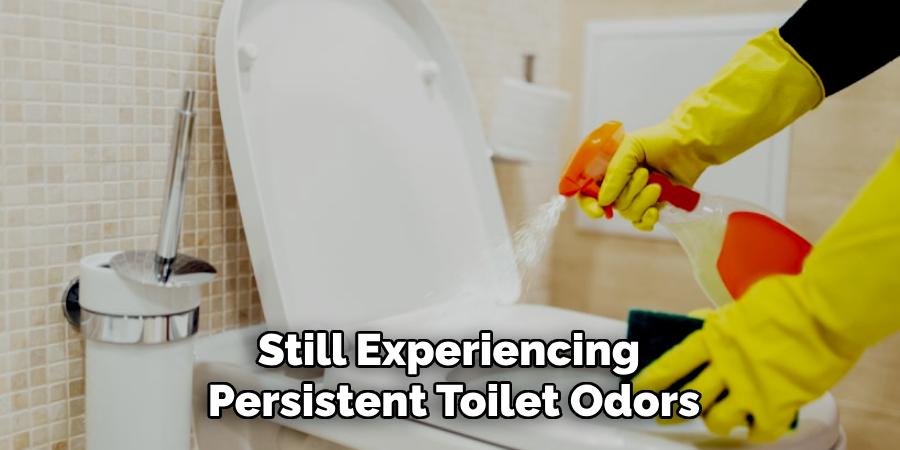
Do You Need to Use Professionals?
While the step-by-step guide on how to remove toilet odor provided above can help you tackle most toilet odor issues on your own, there are situations where consulting a professional is necessary. Persistent smells that linger despite thorough cleaning and maintenance could be a sign of a deeper problem, such as damaged plumbing, sewer line issues, or hidden mold growth. These issues often require specialized tools and expertise to resolve effectively.
Additionally, if you notice frequent leaks, backed-up drains, or fluctuating water levels in your toilet, a professional plumber can perform a comprehensive inspection to diagnose and fix the underlying cause. Professionals are also equipped to handle more complex tasks, like repairing faulty ventilation systems or replacing worn-out seals and pipes.
Ultimately, while many odor problems can be resolved with proper cleaning and care, seeking the help of a professional ensures that serious structural or plumbing issues are addressed properly, saving you stress and potential costs in the long run.
Frequently Asked Questions
Q: Why Does My Toilet Smell Even After Cleaning?
A: There could be various reasons for persistent toilet odors, such as a malfunctioning wax ring, blocked vent pipe, or a damaged toilet seal. It’s essential to thoroughly clean all areas of the toilet and check for any potential issues that may require professional help.
Q: Can Essential Oils Help Eliminate Toilet Odors?
A: Yes, essential oils have natural antibacterial properties and can effectively neutralize unpleasant smells in your bathroom. Consider adding a few drops of your favorite scent to toilet tank water or using them in DIY cleaning solutions for added freshness.
Q: How Often Should I Clean My Toilet Tank?
A: It’s recommended to deep clean your toilet tank at least once every 3-4 months to prevent the buildup of bacteria and mineral deposits. This will help keep your toilet functioning properly and eliminate any potential odors.
Q: What Are Some Other Tips for Keeping My Toilet Smelling Fresh?
A: In addition to regular cleaning and maintenance, there are a few other things you can do to keep your toilet smelling fresh and clean. These include using an air purifier or deodorizing spray, keeping the bathroom well-ventilated, and regularly replacing toilet brushes and mats. Additionally, incorporating natural odor-absorbing materials like activated charcoal or coffee grounds can also help eliminate unpleasant smells in your bathroom.
Conclusion
With these simple steps, you can effectively remove toilet odor and maintain a fresh-smelling bathroom. Regular cleaning and maintenance are key in preventing odors from lingering. Additionally, proper ventilation and regular check-ins with a professional plumber can help identify and address any underlying issues that may be contributing to the unpleasant odor.
With these tips on how to remove toilet odor, you can confidently say goodbye to toilet odors and hello to a clean and fresh bathroom. Happy cleaning! So don’t let a smelly toilet ruin your day – take action and get rid of those odors once and for all!

